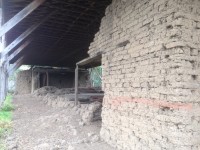In my previous column, I reported upon the death of my father. After having just arrived in Cairo with my son James, I received the news that he was dead. With a little disbelief, after all, I just saw him, we chose to continue with our turning stones adventure through Egypt. As death does, as we move on, we question the meaning of life along the way.
After touring the obligatory sites around Cairo, Tahrir Square, the pyramids and sphinx, the ancient suq known as the Khan el Khalili, the Christian quarter and the Citadel, we hopped on board a tiny plane and headed to the southern city of Luxor, known in ancient Egypt as the city of Thebes. Luxor is also known as the “world’s greatest open air museum.” The temple of Karnak and Luxor bring to life the egos of the pharaohs, each one attempting to out-do previous monumental expressions devoted to their gods.
The barren nature of the Valley of the Kings is a stark contrast to what lays underneath the earth. For over 500 years, between the 16th and 11th centuries BC, tombs were constructed here for Pharaohs and important nobles. Here’s the way it works. The longer one ruled, the longer the tunnel extended into the valley’s mountainous interior. The square tunnels are meticulously carved with hieroglyphics lining the walls with painted vibrant blues and reds, all leading to a burial chamber. One of the most recognized and abundant symbols lining the walls of the tunnels is the ankh.
The ankh represents the concept of eternal life. Throughout ancient Egyptian sites, gods are often portrayed carrying it by its loop. Mummified remains are connected to the concept as the dead move from one realm to another. One can easily make a connection between the ankh and fertility or conception, as the transition between the earth and the celestial is viewed as a re-birth, thus eternal life. With my father’s passing, turning stones in Egypt has me curiously focused on the power of the ankh and its symbolic allure.
My friend Yasser drove to Luxor to take James and I down to Aswan. We take the long way because it is safer. I’m not interested in what dangers lurk on the other road. It is a treat to drive through town after town along the Nile. Not far beyond the banks of this mighty river the formidable Sahara stretches seemingly forever, however every town is bathed in green. We stop in Isna at an a outdoor roadside coffee shop of sorts, to drink tea, smoke sheesha and eat the local bananas.
As we follow the road along the Nile approaching Edfu, there are hundreds of dead camels spaced evenly out from the roads edge. Egypt is still going through some tough economic times and all I can think of is the toll it takes on the animals. Humans eat first. We stop in Edfu and visit an incredible temple dedicated to Horus, one of the oldest deities in ancient Egyptian religion. Construction of the temple began in 237 BC in honor of Horus, who was often depicted as a falcon or as a man with a falcon head.
Arriving in Aswan was like seeing an old friend once again. I immediately met up with Toto, a large Nubian man I first met in 2010. He was happy to see me but I could tell something was wrong. He told me his mother and brother had passed away a week earlier within days of one another. I told him about my father and we both smiled, knowing that we would heal together. We headed to a coffee shop in the city and talked for hours about the key of life.
With death, one tends to think about the meaning of life. James had to endure my crazed philosophical inquiries throughout our trip. I explained to him that eating bananas in Isna has everything to do with the meaning of life, and without it, death would just not be the sam


Be First to Comment